It's hard to make a soup or sauce without fat. In fact, recipes frequently start with gently cooking onions and other aromatic ingredients in oil or butter. The meats, poultry or fish that provide flavor to your soup or sauce also contain fat, which melts or renders into the broth as you cook. Whether you want to remove the excess fat for health reasons or just for appearances, there are several well-established techniques for doing so.
Skimming 101
Left alone, fat will naturally gather at the surface of any soup or sauce. It makes a relatively thin layer, so removing most of the fat without losing broth in the process is a bit of a challenge. The most straightforward method calls for the use of a deep-bottomed spoon or ladle.
Press the back of the spoon or ladle to the surface of the soup, until surface tension is all that prevents the liquid from pouring into it.
Angle the spoon slightly, so it barely breaks the surface tension. Fat is lighter and is at the surface, so it will account for most of the liquid entering your spoon or ladle.
Pour off the skimmed fat into a bowl or measuring cup, and repeat until the soup is largely fat-free.
Alternatively, you can harness fat's tendency to harden when cold. Fill a large metal ladle with ice cubes, and gently swirl it around the surface of the pot. Fat will congeal on contact and stick to the cold ladle, where you can easily wipe it away with a paper towel. Repeat, until the surface of your soup is clear.
Deepen the Pool
No matter which method or utensil you choose, it's easier to skim away a deep pool of fat than a thin one. If you're dealing with a relatively small pan of sauce or broth, you can simply lift one side. Fat will pool at the lower end, where it will be easier to remove. With a large pot of soup or stock, slide it halfway off the burner. Natural convection currents in the hot broth will push fat to the cooler side of the pot, where you can remove it more easily.
The Big Chill
If you're preparing the soup or sauce ahead of time, you can use the refrigerator's chill to your advantage. Chilling a large quantity of soup overnight, or smaller quantities for an hour or two, provides ample time for fat to rise to the surface and then congeal. Lifting out a raft of hardened fat is much easier and more effective than trying to spoon it away when it's melted.
The fridge also comes in handy if you use the skimming technique on hot soup. Ladle the skimmed liquid into a bowl or measuring cup, and put it into your fridge as the rest of the soup cooks. Once the fat on top has congealed, you can scoop it away -- or scrape a hole in it with a spoon -- and pour back any broth that came out with the skimmed fat.
The Tool for the Job
If it's mealtime and your soup or sauce is still fattier than you'd like, good kitchenware vendors have what you need. They're usually described as fat separators or gravy strainers, and they're straightforward to use. Most resemble a measuring cup with a teapot-style spout rising from the bottom of the cup. The fat pools at the top, and you pour your soup or sauce out from underneath. Some companies make sauce-sized ladles that work in a similar way. The pouring lip of the ladle is blocked by a metal partition, with a hole at the bottom. Gravy or sauce flows through, but surplus fat remains on the other side.
An Ounce of Prevention
Skimming and fat removal can be tedious, so it's helpful to minimize fat from the start. Trim away veins of surface fat from meats before you simmer them, and remove the large pockets of fat from just inside a chicken's body cavity. The skin is more of a judgment call; it's fatty but adds flavor. While your soup or broth is cooking, keep its temperature below a boil. Boiling churns the fat and broth together into a cloudy emulsion, spoiling the clarity of the broth and making it impossible to remove the fat.
If your sauce starts with deglazing the pan in which you've cooked meats, blot up any excess fat first with a paper towel. The flavorful browned-on juices won't be affected, and it will leave less fat to remove later.
Related Articles
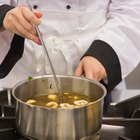
How to Skim Grease in Sauce

How to Degrease Sauce

How To Separate Fat From Meat Juices

How to Separate Fat Without a Fat ...
How to Make Homemade Gravy

How to Thicken the Stock of Chicken & ...

Shaving Soap Recipe With No Lye
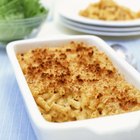
Why Does a Sauce Curdle?
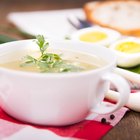
How to Cook Vegetables With Progresso ...
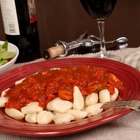
How to Freeze Marinara Sauces

How to Cook an Elk Shoulder

How to Make a Cream Soup Without ...
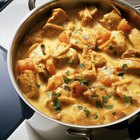
Cooking Yogurt Without Curdling It
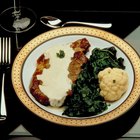
How to Substitute Yogurt for Milk in ...

Can You Use Heavy Whipping Cream in ...
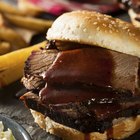
How to Make Corned Beef Gravy
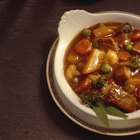
What If Beef Bourguignon Sauce Does Not ...
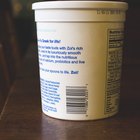
How to Freeze Greek Yogurt
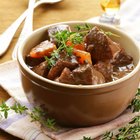
How to Cook a Beef Spleen

Can Chuck Roast Be Used for Stew?
Writer Bio
Fred Decker is a trained chef and prolific freelance writer. In previous careers, he sold insurance and mutual funds, and was a longtime retailer. He was educated at Memorial University of Newfoundland and the Northern Alberta Institute of Technology. His articles have appeared on numerous home and garden sites including GoneOutdoors, TheNest and eHow.